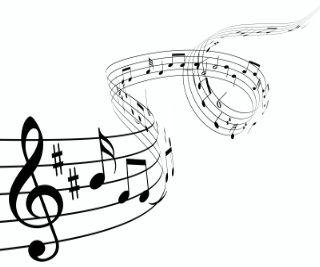Урок-змагання "Музичні стилі" для 8 кл.
Дана розробка є планом уроку-змагання, метою якого є розширювати лексичний діапазон учнів з теми «Музичні стилі»; формувати уміння розпізнавати смислові відтінки прикметників та їх емоційне забарвлення; будувати антонімічні сполуки; удосконалювати уміння описувати, розповідати, характеризувати, аргументувати свій вибір, точку зору, надавати оцінку подіям, ситуаціям, обмінюватись думками; виховувати гарний музичний смак, уміння виявляти власну індивідуальність, повагу до культур інших народів та свого власного народу.
Обладнання: відеопроектор, презентації з теми «Музичні стилі», навчальні додатки.
ПЕРЕБІГ УРОКУ
Загальноосвітня школа І-ІІІ ступенів №2 Покровської міської ради
ПЛАН-КОНСПЕКТ ВІДКРИТОГО УРОКУ
З АНГЛІЙСЬКОЇ МОВИ
У 8 КЛАСІ
З ТЕМИ «МУЗИЧНІ СТИЛІ»

Підготувала:
учитель англійської мови
ЗОШ №2
Варфоломєєва Г.А.
2018 р
Тема: МУЗИЧНІ СТИЛІ
Мета:
- розширювати лексичний діапазон учнів з теми «Музичні стилі»;
- формувати уміння розпізнавати смислові відтінки прикметників та їх емоційне забарвлення; будувати антонімічні сполуки;
- удосконалювати уміння описувати, розповідати, характеризувати, аргументувати свій вибір, точку зору, надавати оцінку подіям, ситуаціям, обмінюватись думками;
- виховувати гарний музичний смак, уміння виявляти власну індивідуальність, повагу до культур інших народів та свого власного народу.
Обладнання: відеопроектор, презентації з теми «Музичні стилі», навчальні додатки.
ПЕРЕБІГ УРОКУ
І. Організація класу. Привітання.
T.: Hello, dear friends, dear guests! I’m glad to see you very much and I hope our work will be interesting and effective. Take these notes, please, and you will see the names of your teams. Unite and be ready to work!
ІІ. Topic, aims. Повідомлення теми і мети уроку
I’d like to draw your attention to a quote on the screen (Slide 1): “When words fail music speaks.” It belongs to Hans Christian Andersen. How do you think, why did he say so? Of course, music has a great variety of expressive means, much more than any language on the world. Today we will revise the lexical material such as names of musical instruments, learn about music styles and hoe to describe them.
III. Warming-up. Розминка.
Let’s warm up a little. I’ll ask you to remember the verbs which are associated with music in your mind. Don’t forget that we work only with verbs! Do this task in your copybooks and then we’ll share our ideas.
M – makes moods better
U – unites
S – stimulates
I – impresses, improves mental and physical abilities
C – cures, calms
Thank you, you were perfect!
IV. Checking homework. Перевірка д/з.
T. : At the previous lesson you were given a task to listen to a symphonic fairy-tale “Peter and a Wolf” witten by Serhii Prokofiev who spent some time of his life in a village near our contemporary Pokrovsk. You also had to learn about instruments which are played in the musical fairy tale. What are they? (A flute, an oboe, timpany etc.). Let’s listen to their sounds (Slide 2). What can you say about them? (They sound very differently).
Now look at the table please (Slide 3). It has got 4 columns. The first one is filled with the names of characters. Next three columns are supposed to be filled by you. You are to define an instrument which stands for each character, find out the instrumental family and describe the sound in brief. Then the teams exchange the sheets and circle the mistakes.
Учитель: - Подивіться на цейдодаток. Ви можете побачити 4 колонки. У першій персонажі казки. Наступні три заповнюєте ви. Вам необхідно визначити інструмент, який відображає кожного з персонажів, групу (сім’ю) інструмента, а також коротко описати його звучання. (Дод. 1)
Very well! I see, you know the names of instruments.
V. Main part of the lesson. Основна частина уроку.
1) Introducing new lexical material. Уведення нових лексичних одиниць (прикметники для опису музики).
T: As you see, different instruments have different sounds and avoke different feelings and emotions. Of course, music styles vary very much too so we have to enrich our vocabulary to describe them properly.
Як бачите, різні музичні інструменти звучать по-різному, викликають різні почуття й емоції. Звичайно, музичні стилі теж дуже відрізняються. Щоб правильно їх описати, ми повинні збагатити свій словник деякими прикметниками з теми.
Учні ознайомлюються з прикметниками для опису музики (Slide 4)
T.: Now try to remember the meaning of words which are familiar to you and find the translation of the words which are completely new. Write them out. Use you gadgets if necessary.
2) Matching the anthonyms. Складання антонімічних пар.
Учні поєднують прикметники з протилежними значеннями (Дод. 2), записують на кольорових смугах паперу, прикріплюють на дошку. Після завершення учитель демонструє слайд з правильними відповідями. Команди перевіряють
результати роботи одна одної.
3) Students’ report about music styles. Учнівські повідомлення про музичні стилі.
T. : Thank you And now let’s speak about music styles. I know that you know a lot of them. What team will remember more?
Учитель: Дякую! А тепер поговоримо про музичні стиліі. Яка команда знає більше?
T. : I know that some pupils have prepared interesting information for you. Listen to the information and make short notes. Then try to guess the style.
Учні слухають повідомлення опонентів і визначають стиль, про який ідеться.
Jazz
It is a music genre that originated in the African-American communities of New Orleans, United States, in the late 19th and early 20th centuries, and developed from roots in blues and ragtime. This style is seen by many as 'America's classical music'. Since the 1920s it has become recognized as a major form of musical expression. Traditional genre is characterized by swing and blue notes, call and response vocals, polyrhythms and improvisation. It has roots in West African culture and African-American music traditions
Rap/ hip hop music
It is a music genre developed in the United States by inner-city African Americans in the 1970s which consists of a stylized rhythmic music that commonly accompanies a rhyming speech that is chanted.
As both a musical genre and a culture it was formed during the 1970s when block parties became increasingly popular in New York City, particularly among African-American youth residing in the Bronx.
Rock music
It is a broad genre of popular music that originated as "rock and roll" in the United States in the early 1950s, and developed into a range of different styles in the 1960s, particularly in the United Kingdom and in the United States.
It has its roots in 1940s and 1950s rock and roll, a style which drew heavily on the African-American genres of blues and rhythm and blues, and from country music. This style has focused on electric blues, folk, jazzclassicalhas centered on the electric guitar.
Folk music
It includes both traditional music and the genre that evolved from it during the 20th century folk revival. The term originated in the 19th century, but is often applied to music older than that. Some types of this music are also called world music. Traditional music has been defined in several ways: as music transmitted orally, music with unknown composers, or music performed by custom over a long period of time. It has been contrasted with commercial and classical styles.
Classical music
A transitional era of about thirty years, termed “Rococo," between the Baroque and Classical periods set the stage for the emergence of this style. Developing during the early period, there appeared expanded instrumental forms such as sonata, concerto, chamber music, symphony etc. At the beginning of this Period the musicians were still dependent on the church and wealthy employers. Gradually this began to change and by 1800 composers were writing mainly for the public.
Pop music
This music style is a genre of popular music that originated in the United States and United Kingdom during the mid-1950s. Its name was a synonim to "rock" until the late 1960s, when they became increasingly differentiated from each other. The genre is distinguished from chart music. This music is mostly eclectic, and often borrows elements from other styles such as urban, dance, rock,
4) Побудова коротких монологічних висловлювань («Мікрофон»)
Учитель пропонує учням висловитися про свій улюблений стиль за зразком:
- Of course, I loke various music style but my favourite one is… I like it because it is… And my favourite singer is… He/she is really…
5) Фізхвилинка (рухлива гра з елементами танцю «A silent dance»)
Учитель пропонує командам показати рухи танцю без музики. Опоненти повинні здогадатися, музика якого стилю повинна звучати.
6) Написання бліц-тесту (6 пунктів)
Учитель пропонує учням відповісти на 6 запитань (питання містять велику кількість прикметників, а відповідями є назви музичних стилів). Час на виконання – 5 хвилин. Потім учні передають роботи за годинниковою стрілкою, виставляють оцінки, передають учителеві.
6) Складання рейтингу музичних стилів.
Учитель пропонує командам скласти власний рейтинг 6-ти стилів, які було розглянуто на уроці. Вибір команди фіксується на дошці, спікери аргументують.
7) Відтворення англомового перекладу вірша «Мені однаково» у стилі реп.
T: As we can observe, mixing styles is very popular nowadays. How do you think, can we mix classical lyrics and modern music? Let us try!
VI. Feedback
На дошці – нотний стан. Учні прикріплюють на нього нотки, де записують враження від уроку.
T. : If you think you worked well and understood everything, stick your notes to the higher lines, if not – stick it to the lower lines.
VII. Hometask
T. Today we haven’t highlighted all the music styles. So, please, prepare information about we haven’t spoken about. You have to write no less than 9-10 sentences, use 1 quotation and at least 4 new adjectives to get the high level marks and 3 adiectives to get the marks of an essential level.
Дод.1
|
Name of a character |
Instrument |
Group of an instrument |
Short sound characteristic |
|
PETER |
A VIOLIN |
STRING |
LIVELY |
|
THE WOLF |
A HORN |
BRASS |
MELLOW |
|
GRAND- FATHER |
A BASSOON |
WOODWIND |
RICH |
|
THE BIRD |
A FLUTE |
WOODWIND |
LIGHT |
|
THE DUCK |
AN OBOE |
WOODWIND |
REEDY |
|
THE HUNTERS |
TIMPANI |
PERCUSSION |
DRAMATIC |
Дод.2
|
exceptional captivating entertaining harmonious light rhythmic energizing lyrical
|
average irritating boring discordant hard smooth calming unaffecting
|
Дод.3
- This music style is energetic and danceable. Its main form is a song laid on music. (POP)
- Music of this style is healing and calming. It is said to be eternal and precious. (CLASSICS)
- It is a mix of words and a tune. Teenagers like it very much. (RAP)
- This music may be soulful and sad as well as lively. It contains the national character. (FOLK)
- This style is meaningful but sometimes aggressive. (ROCK)
- The sounds of this music are rich and mellow. It has got African roots. (JAZZ)
Дод 4
It Makes No Difference To Me
It makes no difference to me,
If I shall live or not in Ukraine
Or whether any one shall think
Of me ‘mid foreign snow and rain.
It makes no difference to me.
In slavery I grew ‘mid strangers,
Unwept by any kin of mine;
In slavery I now will die
And vanish without any sign.
I shall not leave the slightest trace
Upon our glorious Ukraine,
Our land, but not as ours known.
No father will remind his son
Or say to him, “Repeat one prayer,
One prayer for him; for our Ukraine
They tortured him in their foul lair.”
It makes no difference to me,
If that son says a prayer or not.
It makes great difference to me
That evil folk and wicked men
Attack our Ukraine, once so free,
And rob and plunder it at will.
That makes great difference to me.
Taras Shevchenko
St. Petersburg Citadel Prison May, 1847
Translated by Clarence A. Manning Columbia University New York, 1944


про публікацію авторської розробки
Додати розробку
